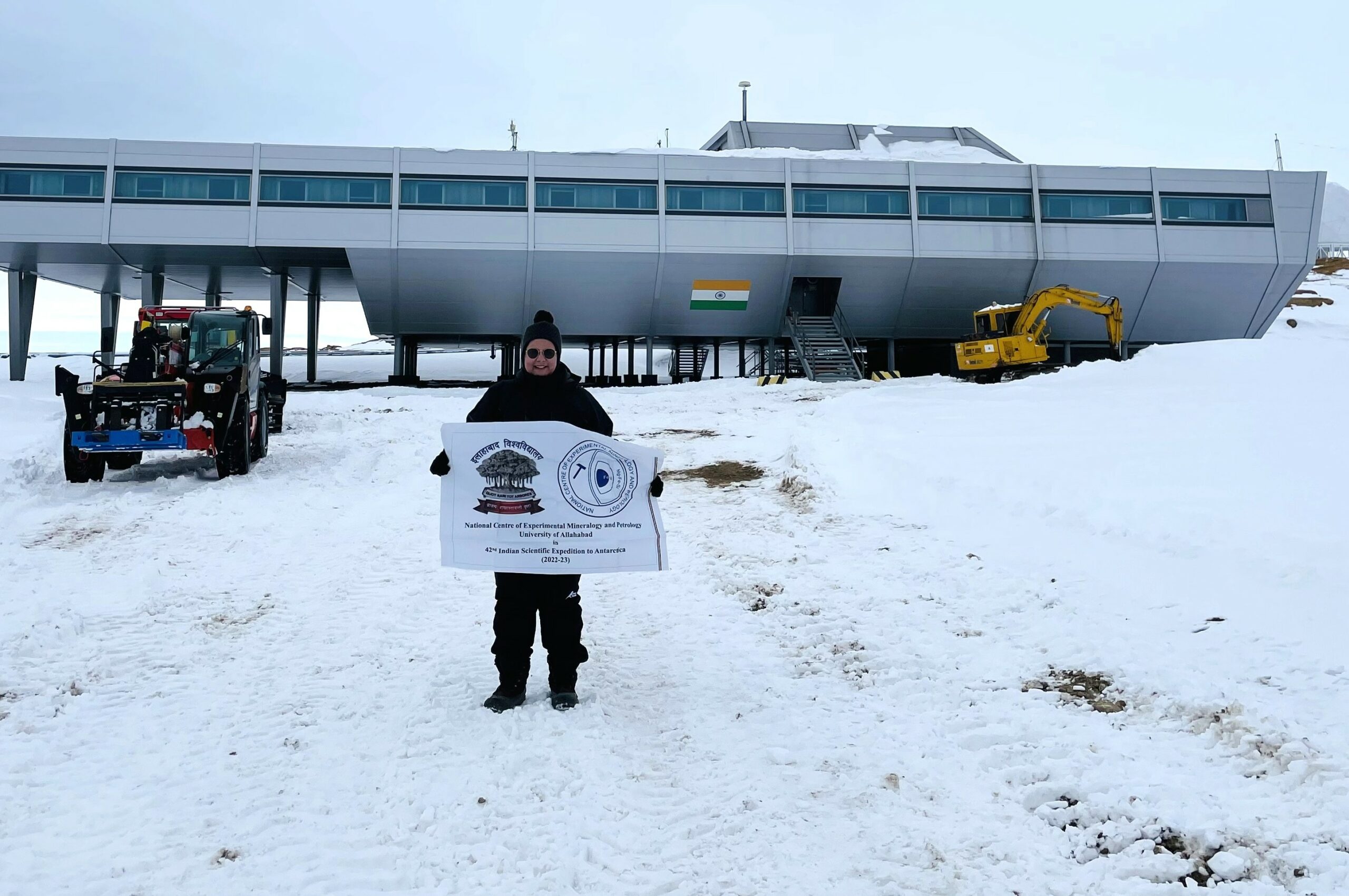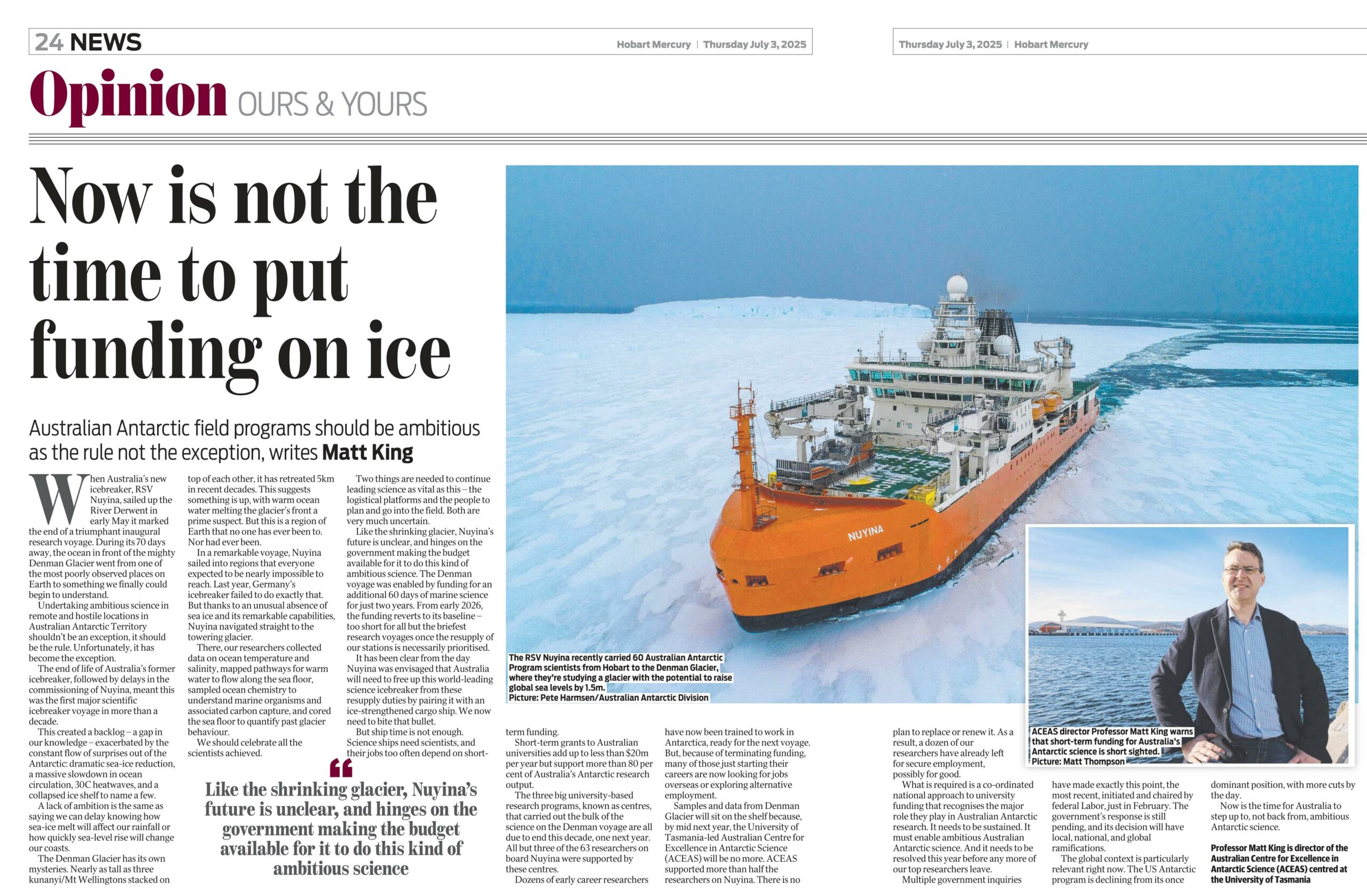40,000 years of sea ice dynamics unearths future clues

A team of researchers has found that a decline in sea ice cover off East Antarctica at the end of the last ice age led to major climate warming and caused the Southern Ocean’s ´control valve´ to open and release carbon dioxide (CO2) into the atmosphere.
Associate Professor Laurie Menviel from the ARC Australian Centre for Excellence in Antarctic Science (ACEAS) at UNSW Sydney is a co-author of the new study, which was led by Dr Henrik Sadatzki from the Alfred Wegener Institute and Helmholtz Centre for Polar and Marine Research in Germany.
The transition from the last glacial period to the current interglacial was marked by major Antarctic climate warming and a rapid rise in atmospheric CO2. The authors say a substantial decline in sea ice cover played a key role in driving these changes.
“Our study shows Antarctic warming and the release of CO2 from the Southern Ocean to the atmosphere is directly related to a rapid reduction in Antarctic sea ice cover,” Dr Sadatzki said.
A massive amount of CO2 was stored in the deep ocean during the last ice age. The Southern Ocean, which surrounds Antarctica, was the main ´control valve´ for the CO2, which it released from the ocean and into the atmosphere.
“Our results suggest that a reduction in the sea ice cover around Antarctica and the associated changes in Southern Ocean circulation led to an increase in atmospheric CO2, which amplified the deglacial warming,” Associate Prof Menviel said.
Today, that same ocean is in ‘reverse’: it plays a crucial role in the Earth’s climate system, absorbing around 90 per cent of the anthropogenic CO2 in the atmosphere.
Molecular evidence from sea floor sediments
The research team investigated a sediment core from a location ~200 km off the coast of East Antarctica that is today ice-free during summer and ice-covered during winter.
Here, the upper three meters of sediments were deposited in the past 40,000 years—which includes the time when Earth transitioned out of the last ice age.
The researchers analysed biomarkers—specific organic molecules in the sediments, some of which were produced by algae living in sea ice and others by algae living in ice-free water.
This biomarker approach enabled the team to resolve the evolution of sea ice conditions during the past 40,000 years.
The researchers combined the evidence gathered from this approach with other sediment core data and compared these with model simulation results—leading to an unprecedentedly detailed and comprehensive investigation of past Antarctic sea ice dynamics, their drivers, linkages with Southern Ocean circulation, as well as climate and atmospheric CO2 changes.
Implications for now and beyond
“Our records indicate that sea ice decline, Southern Ocean circulation changes, atmospheric CO2 rise and climate warming were tightly coupled and reinforced each other,” Associate Prof Menviel said.
“This information is timely,” she said. “As today’s Antarctic sea ice cover has dropped to a historic low for the second year in a row.”
Associate Prof Menviel said Antarctic sea ice is sensitive to atmospheric CO2 rise, which means we could see even more of a drop in sea ice cover in the future as the climate warms. In addition, the Southern Ocean’s capacity to absorb anthropogenic CO2 could be reduced.
“Our unprecedented reconstruction of past sea ice conditions off East Antarctica documents the leading role that sea ice decline and associated feedback mechanisms play in Southern Ocean circulation changes and deglacial climate changes,” Dr Sadatzki added.
“Those changes ultimately re-organised the global climate system.”
This work was initiated by Professor Leanne Armand. Professor Armand was an ACEAS Chief Investigator who passed away last year. She studied Southern Ocean sea ice throughout her entire career.
PAPER
H. Sadatzki, B. Opdyke, L. Menviel, A. Leventer, J. M. Hope, J. J. Brocks, S. Fallon, A. L. Post, P. E. O’Brien, K. Grant, L. Armand. (2023). ‘Early sea ice decline off East Antarctica at the last glacial–interglacial climate transition’. Sci. Adv. DOI: 10.1126/sciadv.adh9513


